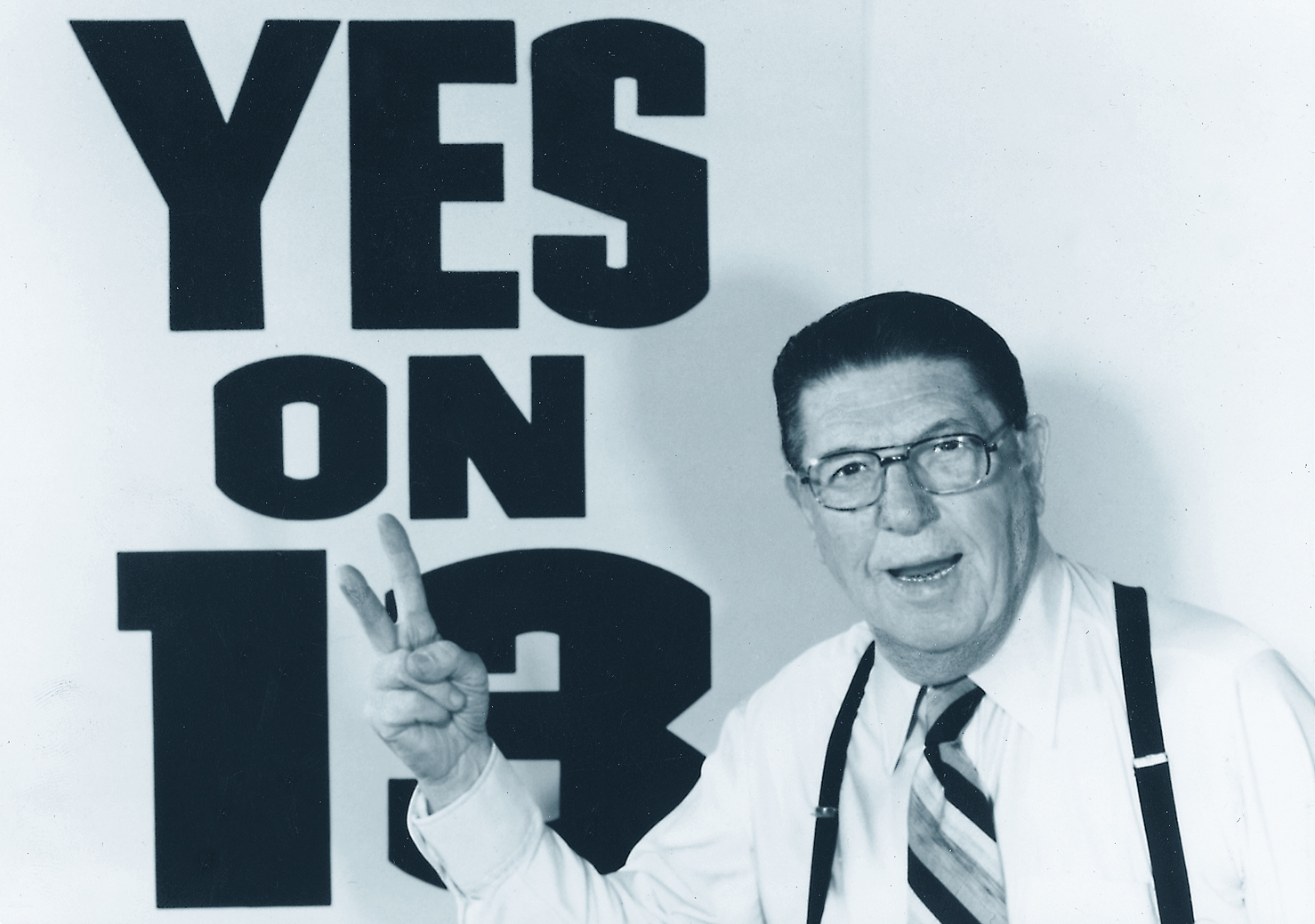Yet, Another Costly Mandate…Here We Go Again!
Rental housing providers continue to deal with a long list of costly mandates imposed by our state and local governments. There are the extremely costly seismic retrofitting ordinances, required inspections of balconies and other exterior elevated elements, signage requirements (including the new, 3 pages Tenant Right to Council Notice, the 2 pages Tenant Protection Notice plus don’t forget to and the Rental Property Registration Certificate…all 6 pages required by the City of Los Angeles), required multi-colored trash bins, and more…too many to list, and many more to come!
Recently, the County of Los Angeles has devised yet another new costly mandate with no cost recovery for housing providers – the new “82-Degree Maximum Air Temperature Mandate” or simply, the “82-Degree Mandate.” The 82-Degree Mandate requires that all rental housing within unincorporated areas of Los Angeles County maintain 82 degrees Fahrenheit or cooler for all “Habitable” rooms in all rental units. Smaller property owners with 10 or fewer units are only required to cool one “Habitable” room to 82 degrees Fahrenheit until 2032, at which time the ordinance imposes a requirement to cool all “Habitable” rooms to 82 degrees Fahrenheit. A “Habitable” room is generally any room within a building used for living, sleeping, eating, or cooking, excluding spaces like bathrooms, hallways, and storage areas.
While the 82-Degree Mandate currently impacts only unincorporated areas of the County, other local jurisdictions within the County may eventually adopt the mandate or create their own – currently, discussions are occurring in the City of Los Angeles to impose similar measures.
Bad for All Parties Concerned – Tenants and Owners
As this issue was first brought forward and later discussed, our organization had been adamantly opposed. At just 82 degrees, there is far less flexibility to meet the mandate other than by installing costly air conditioning equipment, which may require property owners to have to upgrade electrical service at their buildings. Also, air conditioning units use Freon, and will release pollutants into the air that harm the Ozone layer.
Owners who are stuck buying costly air conditioning units to cool one or all habitable rooms and possibly spending far more upgrading electrical service must do so on their own “dime” – the County’s ordinance provides no ability to pass-through these costs to tenants, so property owners will need to recover their costs by charging higher rent for vacancy decontrolled units if and when they are so fortunate to be able to do so. To make matters worse, all this comes on the heels of the County’s move to drastically reduce allowable rent increases to just 60% of the Consumer Price Index for rent stabilized properties.
This new mandate will hurt tenants too. Tenants who are responsible for paying for their electrical service, which is the case in about 80% of rental properties, will now have to bear the cost of higher electrical bills resulting from running air conditioning units. Many tenants struggling today to meet rent and other day-to-day obligations will simply not be able to afford the 82-Degree Mandate.
Lastly, in devising the 82-Degree Mandate, Los Angeles County failed to seek input from Southern California Edison which was not allowed to testify about the stability of the electrical grid and whether the region has sufficient power generating capacity to accommodate the additional load from what will be millions of window air conditioning units in addition to new electric vehicle charging stations and possible future mandates to eliminate gas appliances. As a result, with the imposition of the 82-Degree Mandate, we can expect more brown outs and black outs, and less stability in electrical service.
It’s Just Overkill
Air conditioning is not needed in every part of the County, such as in neighborhoods that are in proximity of coastal areas. Also, there is no legitimate health reason to set indoor air temperatures at 82 degrees which can only be achieved with air conditioning equipment when other government bodies have set the maximum air temperature at 86 degrees. At 86 degrees, it is possible to meet this maximum indoor air temperature through using evaporator coolers and multiple other passive cooling technologies, and these other solutions would cause far less damage to the environment and be far less costly to both owners and tenants. For example, the California Department of Industrial Relations had previously set an indoor maximum temperature of 86 degrees in June 2024 for all workplaces, and there is no legitimate “health” reason that a residence should be cooler than an average workplace. So, why did the County mandate 82-Degrees? We may never know.
Moreover, the 82-degree mandate requires that property owners cool all habitable rooms, and not just one room, which will drive up the cost for both owner and tenants even further. If truly a health mandate, why isn’t one room where family members can congregate to seek relief sufficient? Politicians who are never responsible for the cost or the implementation necessary to meet their mandates, never concern themselves with fairness or what may ultimately cause unintended consequences.
A Whole Host of Issues Arise!
At the higher, 86-degree Fahrenheit maximum indoor air temperature standard, there is a far less expensive and better for the environment cooling solution available, an evaporator cooler (a/k/a, swamp cooler). These cooling devices use about one-third of the electricity of an air conditioning unit, and they do not create “heat islands” contributing to global warming the same way air conditioning units do. Evaporator coolers are portable and can be rolled from room to room where they are needed and do not require special structural work as they are placed entirely inside the rental unit. The County’s original report from the Department of Public Health recommended an indoor threshold of 86 degrees to allow for evaporator coolers, and other jurisdictions have adopted the same standard. Unfortunately, the County decided to opt-in for more costly and atmosphere damaging standards – where are the environmentalists when you need them? (The environmentalists are probably the tenants in our buildings looking forward to new, free central air conditioning.)
Any cooling device will be ineffective if too expensive to operate because renters cannot afford the required electricity. It’s like prescribing medication with a high co-pay that makes medicine too expensive for a patient to refill. If this issue is really all about preserving the health of the County’s renter population, and not about the status of having air-conditioned rental units, then evaporator coolers should have been supported by the County instead of the far more costly and more polluting air conditioning units.
The expansive requirement to cool all habitable rooms, meaning living, dining and bedrooms, and perhaps even a kitchen (although, not sure if a kitchen is necessary although it falls under the definition of a habitable room generally – not sure ordinance addresses this) is overreaching. As I had stated earlier, families can merely congregate in a cooled room until outside temperatures decrease. Instead, the County sought to add the increased financial burden of covering all habitable rooms. Despite the permitted carveout for small owners, that one habitable room mandate expires sometime in 2032 – by then, small owners must abide by the Full Monty.
Then, there is the insurance issue, which is not addressed by the County’s ordinance but hopefully can be addressed in a lease agreement. Under the County’s ordinance, tenants may upon 5-days’ notice install air-conditioning units. In the case of a tenant installation, that would be tenant property and hopefully be covered by the tenant’s renter’s insurance. But, beyond that policy, it would be up to the owner to cover. And, what happens if the tenant’s installation causes a fire? I know, the whole thing sucks to put it bluntly. Like many other regulations, unintended consequences can and will happen.
Then, there is the installation of window units. The ordinance requires a tenant’s installation to abide by code, so the owner would have possible recourse against a tenant who does not meet the code, and perhaps against the installer, but good luck collecting on that one. To the extent a landlord has resources to do so, it would be prudent to review the installation during the regular inspection process and following initial installation (which landlords are to receive 5 days’ notice of). That’s another obligation rental housing providers will now be burdened with. It seemingly never ends.
And there you have it. The 82-Degree Mandate costs you and your residents’ money…you as owner, unfortunately, a lot more money, and imposes new inspection obligations and risks of non-compliance, equipment failure, and taxing the electrical grid. Plus, we get to add more pollutants to our environment. All good in the minds of our County’s Board of Supervisors.







